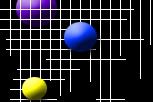"PER-STEM-IC" ACIDS are made by adding 1 Oxygen to the acid.
ClO4
-> HClO4 -> Perchloric Acid
NO4 -> HNO4 -> Pernitric
Acid
SO5 -> HSO5 -> Persulfuric Acid
CO4 -> HCO4
-> Percarbonic Acid
PO5 -> HPO5 -> Perphosphoric Acid
"STEM-OUS" ACIDS are made by subtracting 1 Oxygen from the acid.
ClO2
-> HClO2 -> Chlorous Acid
NO2 -> HNO2 -> Nitrous
Acid
SO3 -> HSO3 -> Sulfurous Acid
CO2 -> HCO2
-> Carbonous Acid
PO3 -> HPO3 -> Phosphorous Acid
"HYPO-STEM-OUS" ACIDS are made by subtracting 2 Oxygens from the
acid.
ClO -> HClO -> Hypochlorous Acid
NO -> HNO
-> Hyponitrous Acid
SO2 -> HSO2 -> Hyposulfurous Acid
CO -> HCO -> Hypocarbonous
Acid
PO2 -> HPO2 -> Hypophosphorous Acid
BASES
Properties of Bases:
Contain Hydroxide (OH)-
polyatomic ion + Metal or a poly+
Name a Base by adding
“Hydroxide to the name of the positive element
Ex: KOH -> Potassium
Hydroxide
Ca(OH)2 -> Calcium Hydroxide
AgOH -> Silver Hydroxide
CuOH -> Copper I Hydroxide
Cu(OH)2 -> Copper II Hydroxide
ANAHYDRIDE
A substance that when added to H2O will form an Acid or Base
Acids
Non-Metal + Oxygen
H2SO4 <-> H2O + SO3
H2SO4
-H2 O
----------
SO3
Anahydride equations
are reversible (Hydrate and Dehydrate the Acid/Base)
::NOTICE::
You must have an even
number of Hydrogen atoms in order to subtract H2O
HClO3 ->
2[HClO3] -> H2Cl2O6
-H2 O
---------
Cl2O5
Thus: Cl2O5
+ H2O <-> 2HClO3
SALTS
Binary Salts
“+” ion
– stem – ide
NaCl -> Sodium Chloride
KF -> Potassium Fluoride
Li2S ->
Lithium Sulfide
Ca2N3
-> Calcium Nitride
Cu2Se ->
Copper I Selenide
(NH4)3P
-> Ammonium Phosphide
Ternary
Positive Ion + Negative
Polyatomic Ion
Metal+stem-ate
NaClO3 ->
Sodium Chlorate
Mg(NO3)2
-> Magnessium Nitrate
CuSO4 ->
Copper II Sulfate
Polyatomic with 1 less
Oxygen Atom
Metal+Stem-ite
NaClO2 ->
Sodium Chlorite
Mg(NO2)2
-> Magnessium Nitrite
CuSO3 ->
Copper II Sulfite
Polyatomic with 2 less
Oxygen Atoms
Metal+Stem-ite
NaClO -> Sodium Hypochlorite
Mg(NO)2 ->
Magnessium Hyponitrite
CuSO2 ->
Copper II Hyposulfite
Polyatomic with 1 more
Oxygen Atom
Metal+Per-Stem-ate
NaClO4 ->
Sodium Perchlorate
Mg(NO4)2
-> Magnessium Pernitrate
CuSO5 ->
Copper II Persulfate
(REMEMBER: when adding
or subtracting Oxygen from a Polyatomic Ion, the Charge of that Ion remains the same: (ClO3)-1 (ClO4)-1
)
(REMEMBER: When in doubt
of the formula of a given polyatomic ion, refer to other elements in the same family.
Elements of the same family have similar reactivity: ClO3 -> Chlorate, FO3 -> Fluorate,
BrO3 -> Bromate)
***Arsenic reacts similar
to Phosphorus, not Nitrogen***
NO3 , PO4 , AsO? Because Arsenic is in closer proximity to Phosphorus on the periodic table, it will
react more like Phosphorus than Nitrogen, thus:
Arsenate -> AsO4

